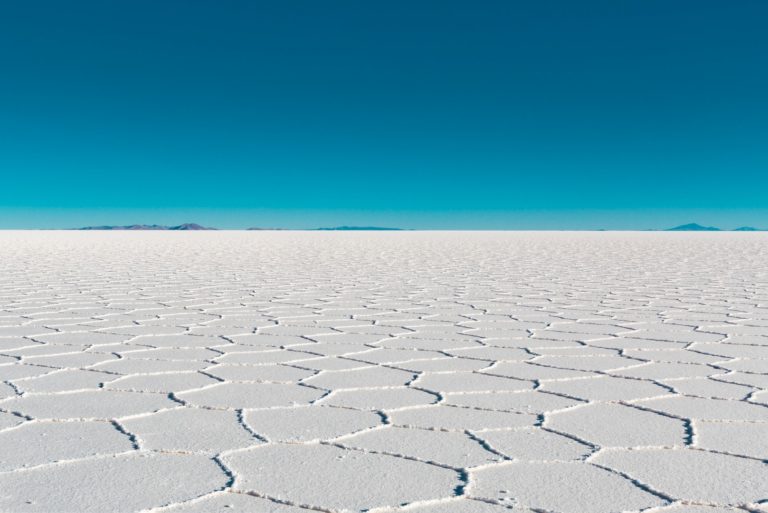Reading Practice: The Future of Lithium

Here’s where you can download Reading Practice texts and professionally made worksheets designed to test and improve your reading skills – all available for only a few Academic Marks. Each authentic reading text has been carefully selected to best improve academic reading skills through repetition and success.
Before you begin reading...
-
video and audio texts
-
knowledge checks and quizzes
-
skills practices, tasks and assignments
Category: The Environment
Topic: The Future of Lithium
Difficulty: Intermediate-Advanced
Length: 1,396 words
Description: A medium-length academic article about the many uses of lithium, particularly focusing on its use in rechargeable batteries and environmental impact.

The Future of Lithium
A Discussion About ‘White Gold’ and its Environmental Impact
In the twenty-first century, the attention of scientists, manufacturers and the media has been increasingly focused towards one resource in particular: lithium. Since its discovery in the nineteenth century, lithium has had several significant technological uses, from weapons to medicine and most recently for the use of rechargeable batteries. As the demand for electric cars now threatens the oil industry and will potentially shift humanity’s needs away from fossil fuels, the use of lithium in rechargeable batteries is predicted to have a significant impact on current economic and social models. The following article first follows the discovery, developments and demands of this resource before also considering the impacts and implications this so-called ‘white gold’ is having on the world’s environment. 1
Scientists believe that lithium was likely created with the events of the Big Bang 13.7 billion years ago, but as with many resources it was not until the development of science and technology in the early 1800s that this element was formally discovered. It is now understood that lithium can be found in two primary environments: mines and brine water. The former refers to the lithium found in hard-rock formations such as in spodumene and petalites. It was during the analysis of petalites (a type of mineral) that Swedish physicist Johann August Arfvedson discovered lithium in 1817 – although it took approximately fifty more years to isolate the lithium compound. This was done by using an electric current to cause a chemical reaction known as electrolysis. The combination of mining such ore minerals and extracting the lithium through electrolysis is considered an expensive production process. This was nevertheless the predominant method for producing lithium up until the late 1990s. From this point onwards, it then became increasingly common to instead extract lithium from brine water as producing lithium in this way costs almost half as much as mining it. 2
Brine containing lithium reportedly represents over 80% of the world’s lithium reserves. Such brine most commonly occurs in underground reservoirs below the surface of salty, dried lakebeds. There are a number of these lakebeds (or salars, as they are called) in the world, but one of the largest and perhaps most reputed geographical areas for them is known as the ‘white triangle’ and crosses Chile, Argentina, and Bolivia. From the underground pools of these salars, brine is first extracted and then the sun is used to evaporate much of the liquid until enough concentrated lithium remains. These remains are then pumped to a nearby processing plant in which additional metals such as magnesium or barons are removed. Although this process is certainly cheaper than traditional mining, it can take up to two or three years before the necessary evaporation is complete. Therefore, although brine extraction may be more cost effective, it is not necessarily quicker than traditional mining methods. Nevertheless, lithium companies appear to be continually investing into newer technologies to decrease the production time, and it is believed that in the near future these companies will succeed in expediting the process greatly. 3
Perhaps unknown to most people outside of South America, it is significant that such lithium-dense salars are found in Bolivia as this country is economically one of the weakest in the region. Most of its citizens live impoverished and are well below the poverty line. In 2018, however, it was reported that the Bolivian prime minister Evo Morales agreed to a business deal with a small German company to build a multi-million-dollar lithium production plant. This new partnership is hoped to provide Bolivia the opportunity to significantly increase its GDP (Gross Domestic Product) as it is predicted that the demand for lithium will double by the year 2025. The cause for this predicted increase in demand appears mostly linked to the use of rechargeable batteries in electric cars. However, before the invention of batteries, particularly the type found in many of society’s most popular turn-of-the-millennium electronic devices, lithium has historically had multiple significant uses. These uses can perhaps be most easily separated into two categories: those for the body and those for industry. 4


The first recorded use of lithium as a prescribed health remedy occurred in the nineteenth century. Through lab experiments on rodents, scientists discovered that lithium could break down the uric acid crystals that are often found in patients with gout. However, this treatment was not considered viable because the amount of lithium required to treat gout was found to be toxic for the human body. Nevertheless, as the knowledge of the science community developed, and with it an understanding of the chemical balances within the human body, lithium was found to be effective for those inflicted by certain mental illnesses. Therefore, lithium, specifically lithium carbonate, is still commonly used in medications to assist those who have depression, bipolarism and other mental disorders. The success of this drug appears to be supported by several medical studies. However, it has also been noted by mental health workers, academics and members of the general public that such medications are often overly prescribed in modern societies and that pharmaceutical companies are perhaps more motivated by growing and sustaining profits rather than the long-term welfare of their patients. 5
In addition to the debate surrounding mental-health medication, it is perhaps the more industrial uses of lithium that have produced some of society’s most notable controversies. For example, in the early twentieth century, physicists discovered that the irradiation of lithium neutrons, specifically lithium 6 neutrons, produced tritium. Tritium is a rare radioactive isotope of hydrogen – which is a key component in weapons such as the highly destructive hydrogen bomb. Therefore, in western countries after the second world war, the demand for lithium appears to correlate directly with the unfolding events of the Cold War. More recently however, the demand for this resource has diverged and been impacted instead by the consumer industry’s demand for rechargeable batteries. More specifically, it has been reported that since as recent as 2007, the demand for lithium is now primarily for the purpose of personal electronic goods. The introduction of smartphones and tablets, and the increased need for up-to-date laptop computers, have all contributed to lithium becoming one of the most valuable resources in the modern era. 6
Furthermore, the use of lithium for rechargeable batteries seems to have generated media attention involving the environment for two opposing reasons. Although it is often reported that extracting lithium from brine reservoirs has less of a negative impact on the environment than traditional mining, the research appears to be inconclusive. During both the evaporation and factory-based processes, toxic chemicals are released from the brine into the Earth’s atmosphere. How chemical biproducts of these processes are disposed of also seems to be inconsiderate of nearby water sources, and reports of ecological destruction in both traditional and brine-production zones appears to correlate with an increase in the demand for lithium. Similarly, it has been reported that fewer than 5% of lithium batteries in Europe are recycled – which is a number that may be even lower in other regions of the world. The extraction of lithium could therefore have a significantly negative impact on the environment, leaking toxins into water supplies or agricultural land and potentially damaging plants, animals and humans. 7
In contrast, the development of electric cars by companies such as Tesla is predicted to have a significantly positive impact on the environment by decreasing the amount of greenhouse gases in the atmosphere. This development will also most likely see a substantial decrease in the demand for oil, potentially making lithium the most expensive and in-demand resource on the planet. Reports already indicate that the value of this element doubled in price between 2016 and 2018. It would therefore be fair to posit that this increase in value will continue with increased demand. 8

Whether countries such as Bolivia will benefit financially from what is being coined in the media as ‘white gold’ is yet to be seen. Historically, countries and companies who are already in a position of power tend to utilise whichever resource they require, regardless of where it is, while maintaining a majority share in profits. It certainly seems that lithium is – and will continue to be – an incredibly important resource in society’s future. One can only hope that humanity will be responsible enough to preserve the environment in the process. 9
Word count: 1,396
Downloads
This is where you can download the materials you’ll need to complete this reading task about ‘The Future of Lithium‘.
Collect Academic Marks
-
100 Marks for joining
-
25 Marks for daily e-learning
-
100-200 for feedback/testimonials
-
100-500 for referring your colleages/friends